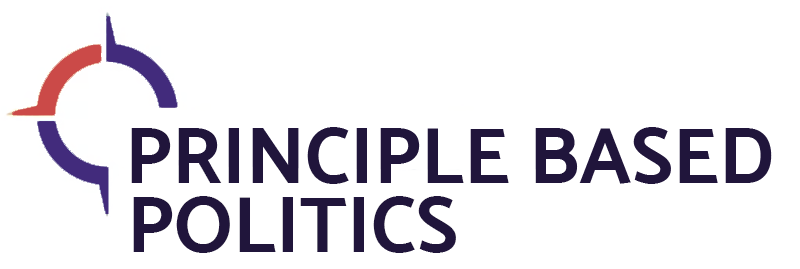
20 Jul Abortion: Weighing the Principles
Abortion presents the type of issue most suitable for politics based on principle. The issue is controversial, it has several tricky layers, the political parties have taken sides, and opinions seem locked in. When an issue is as entrenched, complicated, and divided as abortion has been in the past, it is time to look at it from a new angle. That angle comes from the perspective of principles.
A Principled Analysis of Abortion
The issue of abortion forces a most complex balance between three principles, while at the same time involving the difficult need to weigh the rights of multiple parties and determine who is most in need of government help. We will attempt to explain this all in two posts, the first of which (below) focuses on the principles that apply to the question of whether our governments should allow abortion. The second post will focus on what, specifically, the federal government should do about the topic.
The three principles involved in the debate about the legality of abortion are freedom, protecting the vulnerable, and limited government. However, before we review the intertwined plot that unfolds among these three principles, let us remember that abortion most importantly involves both a female and a fetus. Government is involved only from the standpoint of legality.
As Principle Based Politics looks at it, freedom and protecting the vulnerable are principles that apply to both the fetus and the female, in quite equal ways. The principle of freedom tells us that the fetus ideally should be free to live, be it under the Constitution (no person deprived of “life” without “due process of law”), the Declaration of Independence (“unalienable Rights” include “Life, liberty, and the pursuit of Happiness”), or the Bible (Exodus 20:13, “Thou shall not kill”).*
*The word “abortion” itself does not appear in the U.S. Constitution, the Declaration of Independence, or the Bible. Nor is even the concept of abortion mentioned in any of them. This silence affects both the female and the fetus, as these fundamental and normally helpful sources are less informative regarding the “right” to not be aborted or to have an abortion, as the case may be.
But, so, too, does the principle of freedom tell us the female should be free to experience liberty and to pursue happiness under the same principles; ideally, it should be her choice alone whether to carry a fetus, give birth, and be a parent. On the freedom principle, our analysis results in a tie between the female and the fetus, and the two outcomes appear to be unreconcilable.
Protecting the vulnerable also is a close call in the abortion context. First, the female definitely is vulnerable. This vulnerability is both economic (it is costly in many ways to have a baby and raise a child), and the female may have been subjected to abuse. Her liberty certainly is at stake. The fetus, meanwhile, is vulnerable in that its very life is on the line.
Limited government—the third principle—comes into view when we analyze whether something needs to be done, and, if so, whether the federal government is the only entity that can do it. We will consider those aspects in our next post.
The issue really boils down to who is more vulnerable, the female or the fetus. We will jump right to the conclusion: On balance, to us, except in cases when the female’s life is in danger or she became pregnant through rape, the vulnerability of the fetus seems more compelling. It is the consequence to which the fetus is vulnerable (i.e., its death) that tips the scale for us. Death is such a permanent and complete result of an abortion; whereas, the consequences to a female who is not allowed to abort are somewhat less final and unalterable.* When the female has been raped, or when carrying a fetus until birth could cause her to die, then vulnerability is much more even between the two, and the freedom and vulnerable state of the female should prevail.
*Any governmental disallowance of abortion must be coupled with remedial services and benefits for the female (and the baby that is born), as our next post will explain.
The above is our analysis of the result the principles—and the principled process—for which we advocate would produce on the question of whether abortion should be allowed.*
*This principle-driven result is consistent with our positions on capital punishment, climate change, and other issues as to which protecting the vulnerable is involved.
Where Does this Leave Us?
What we have not yet answered is what the federal government—or any government, for that matter—should actually do about abortion. Should the United States Constitution be amended? Should a federal law be passed? If a law is passed, what should it say? Does the federal government truly need to do anything at all, or should the matter be left to the states? Those are questions our next post will address.
If this post leaves you with feelings of anger, that is natural; abortion is an emotional issue. Perhaps we will make you upset with your friends (or yourself) who have been Very. Sure. They/You. Are. Right. About. Abortion. Indeed, abortion is more complex than most people think it is.
One place we hope this leaves all of us is believing that principles can provide a rational, thoughtful analysis of and solution for any complicated issue that has become political in nature.
Written by Quentin R. Wittrock, founder of Principle Based Politics.
Look for his posts twice each week, as this blog will explore and promote the idea of principle in politics, both as to individual elected leaders and our federal government as an institution.
Future political issues to be analyzed under our principle-based method include: taxation, health care, climate change and the environment, selecting federal judges, regulation, social benefits programs (including Social Security), law enforcement, and foreign relations.


Sorry, the comment form is closed at this time.